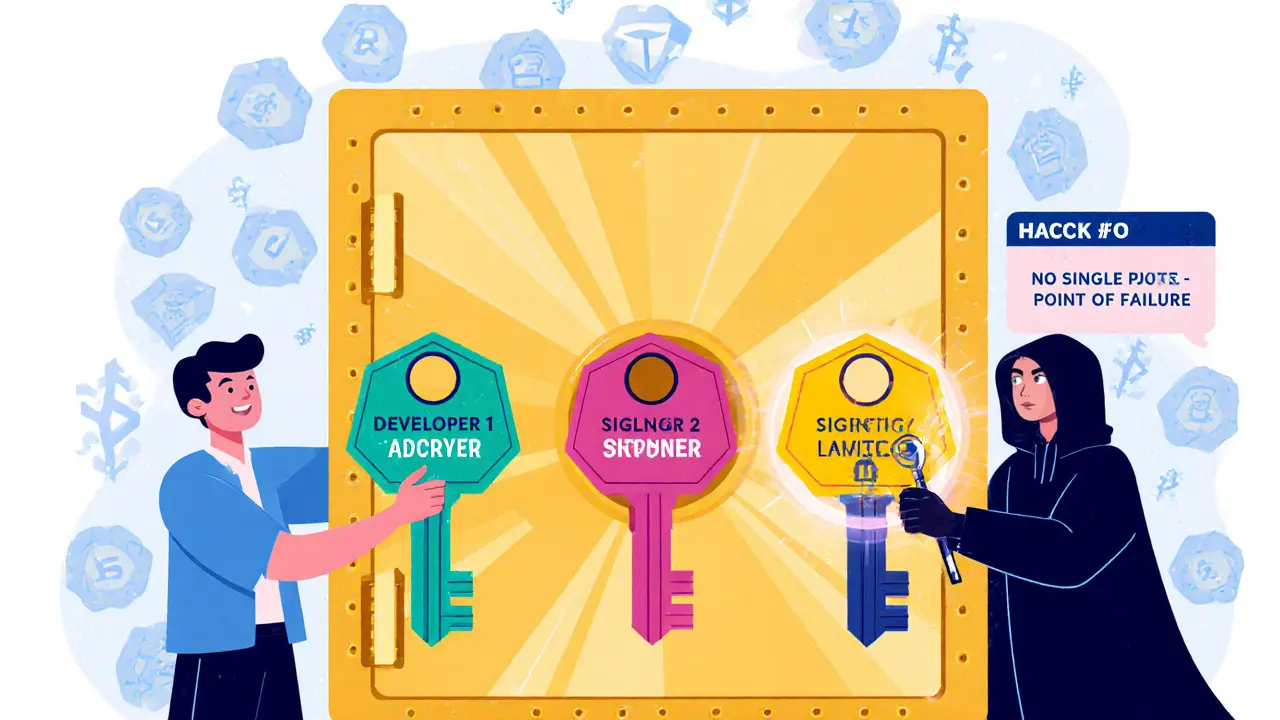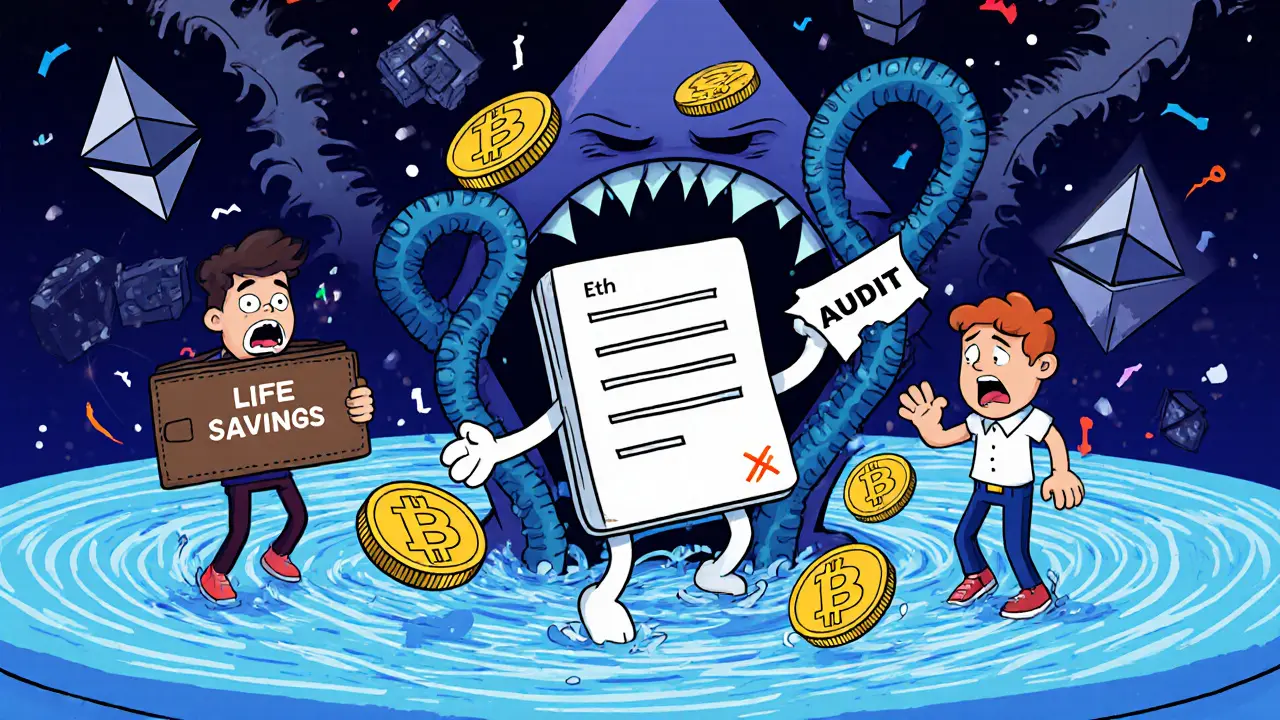Blockchain Security: Protecting Smart Contracts and Crypto Assets
When working with Blockchain Security, the practice of safeguarding blockchain networks, smart contracts, and related assets from attacks, bugs, and fraud. Also known as crypto security, it helps developers, investors, and enterprises keep digital money safe while preserving trust in decentralized systems. Have you ever wondered why a $50 million rug‑pull can still happen after a code review? The answer is that security isn’t a one‑off checklist; it’s a continuous process that blends code analysis, threat modeling, and real‑world testing. In 2025, the market is buzzing with new audit platforms, AI‑driven scanners, and cross‑chain testing suites, all aiming to close the gaps that traditional static analysis missed. Understanding the landscape means knowing the core pieces that make up blockchain security – from the people who write the code to the tools that sniff out hidden bugs. Below we’ll break down the main moving parts so you can see where the risk lives and how to manage it before a hack hits your wallet.
One of the first pillars of Smart Contract Audit, a systematic review of contract code aimed at finding vulnerabilities, logic errors, and gas inefficiencies is the audit itself. A thorough audit looks at everything from re‑entrancy flaws to improper access controls, and it often ends with a public report that scores risk on a scale you can actually understand. Most projects treat this step as a prerequisite because Blockchain Security encompasses smart contract audits – without a solid audit, the rest of your defenses are built on shaky ground. In practice, you’ll see three typical tiers: a basic token review that might cost a few thousand dollars, a mid‑level DeFi protocol audit that runs into the low‑five‑figures, and an enterprise‑grade, multi‑chain audit that can top six figures. The pricing model is usually a mix of fixed fees plus a variable component based on lines of code, complexity, and the expected effort of manual testing.
Another key player in the space is DeFi Security, the set of practices, tools, and standards designed to protect decentralized finance applications from exploits and market manipulation. DeFi platforms often handle large pools of liquidity, so a single bug can cascade into massive losses across the ecosystem. Because of that, DeFi security influences blockchain security costs – a protocol with high TVL will usually face stricter audit requirements and higher fees. Common tools include automated fuzzers, formal verification engines, and runtime monitoring solutions that alert you when a contract behaves outside its expected parameters. Many auditors also run live testnet attacks to see how the system reacts under pressure. This hands‑on approach helps uncover issues that static analysis alone can’t catch, like price‑oracle manipulation or flash‑loan attacks that only surface in real market conditions.
Finally, let’s talk about Blockchain Audit Fees, the cost structure that covers labor, tooling, reporting, and post‑audit support for blockchain security assessments. Understanding these fees is crucial for budgeting, especially if you’re a startup trying to allocate runway. Typical fee components include a base price for code review, a premium for multi‑chain support, and optional add‑ons like post‑audit monitoring or a bounty program to incentivize external researchers. Hidden costs can pop up in the form of revision rounds—most audits include at least two cycles of feedback, but deeper changes can drive the price up quickly. A practical checklist to keep fees in check is to get clear scope definitions, request a detailed breakdown before signing, and ask for a flat‑rate option if you expect many iteration cycles. By mastering the fee landscape, you can avoid nasty surprises and ensure your security investment actually protects the value you’ve built.
Below you’ll find a curated collection of articles that dig into each of these topics in depth. From a 2025 breakdown of audit pricing to a step‑by‑step budgeting guide, we’ve gathered the insights you need to make informed decisions about protecting your blockchain projects. Ready to see how the numbers stack up and what you should look for in a reputable audit partner? Keep scrolling to explore the full set of resources we’ve assembled just for you.
State channels let you make instant, low-cost transactions off the main blockchain by locking funds in a smart contract and settling only the final state. Used in Lightning Network and Raiden, they solve blockchain scaling for frequent, small payments.
MultiSig wallets protect DAO treasuries by requiring multiple approvals for transactions, preventing hacks, reducing single points of failure, and meeting regulatory standards. Gnosis Safe leads adoption with 68% market share.
Lending protocols in DeFi offer high yields but come with serious security risks like flash loan attacks, oracle manipulation, and reentrancy bugs. Learn how hacks happen, why audits aren’t enough, and how to protect your funds in 2025.
A detailed look at the Pax.World (PAXW) NFT airdrop, covering how it worked, eligibility steps, red flags, token decline, and how to stay safe from similar scams.
Peer-to-peer networks are the backbone of blockchain, letting users transact directly without banks or servers. Every node holds a copy of the ledger, making systems like Bitcoin secure, transparent, and resistant to failure.
Learn 2025 crypto security audit costs, from basic token reviews to enterprise multi‑chain audits, and get budgeting tips, hidden fees, and a practical checklist.






